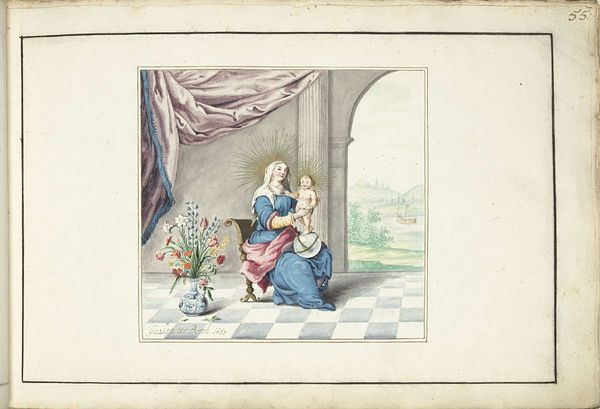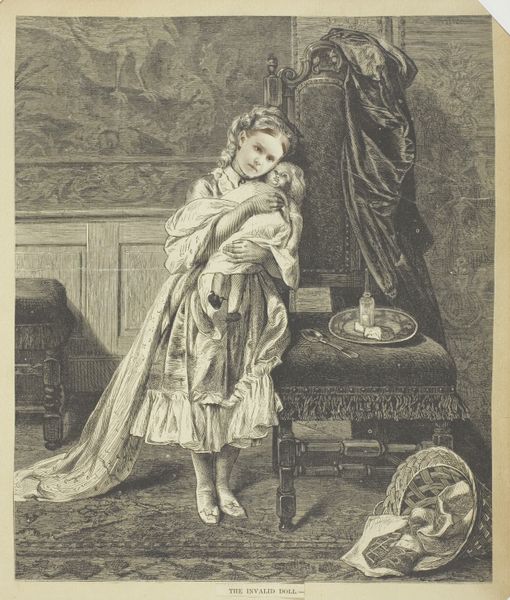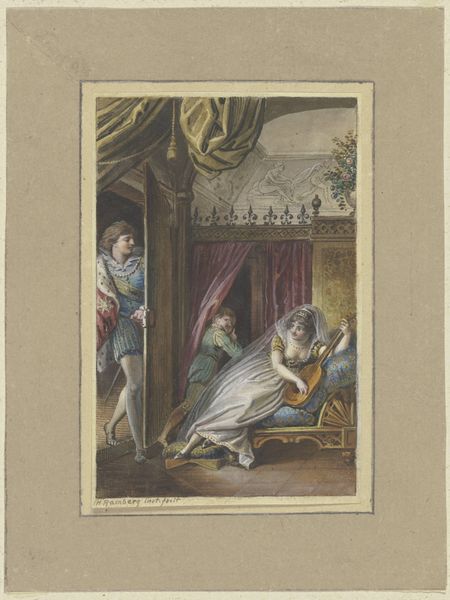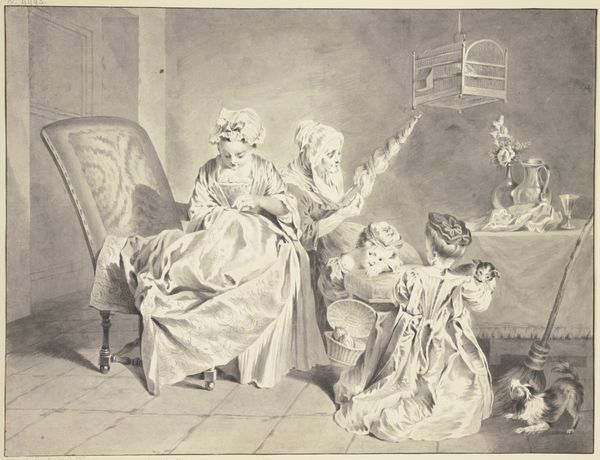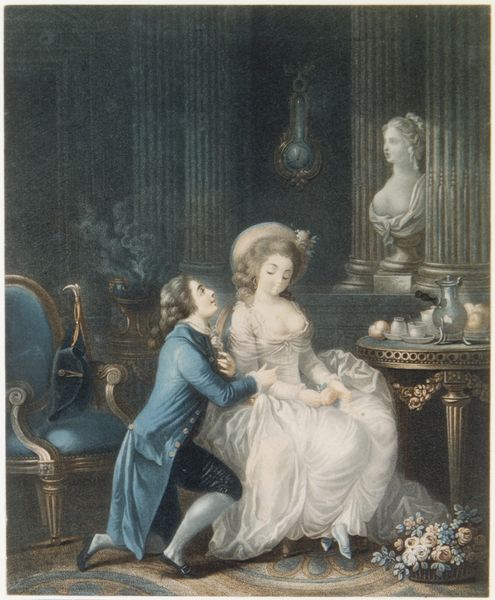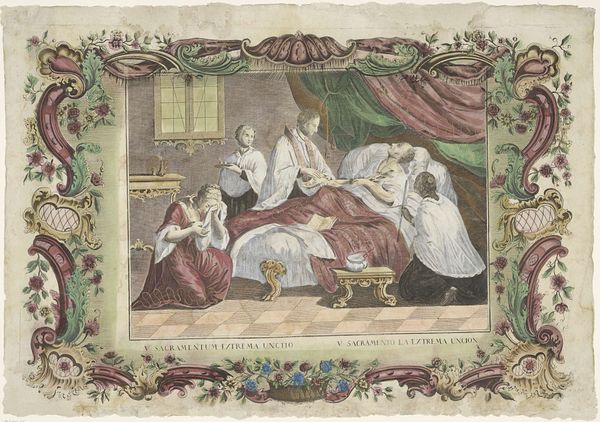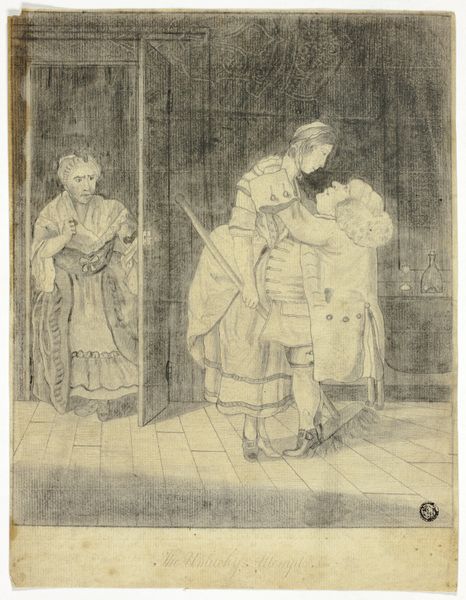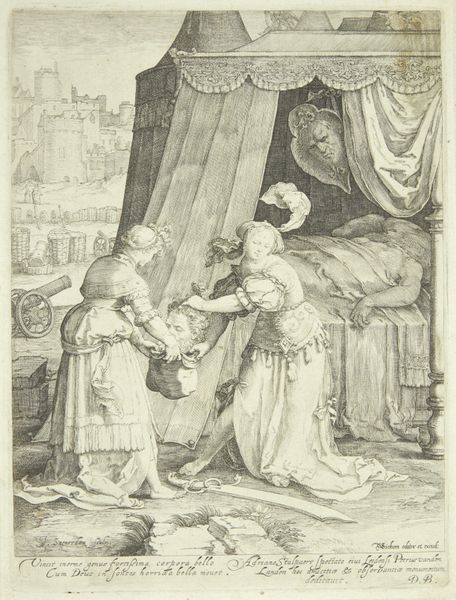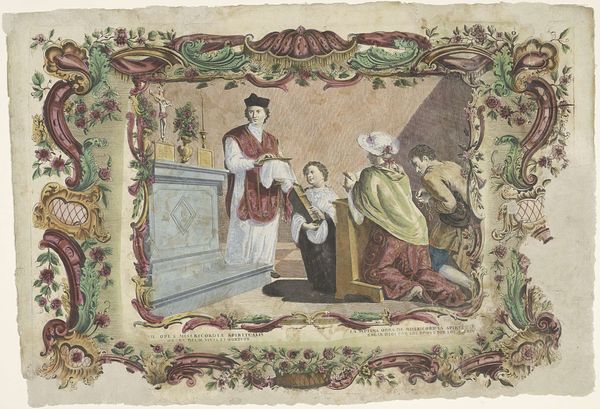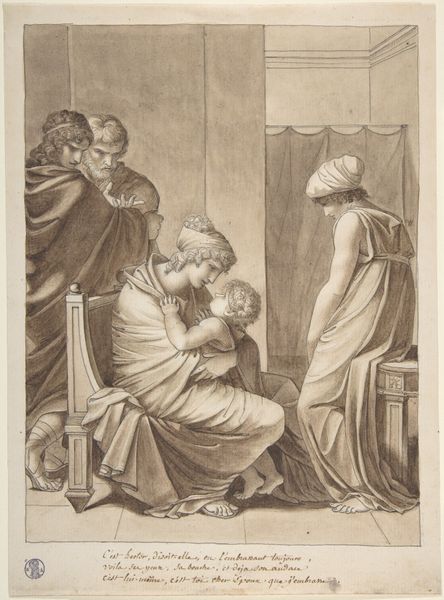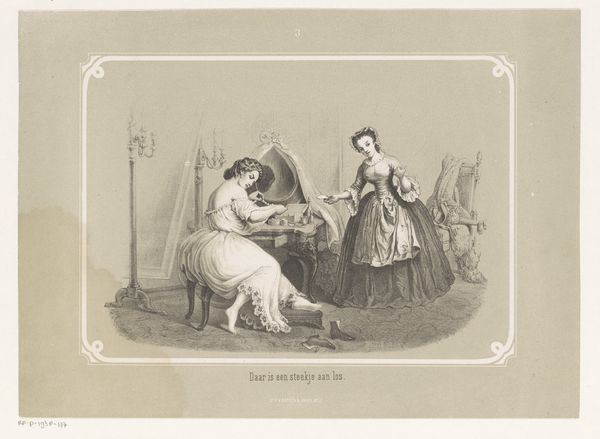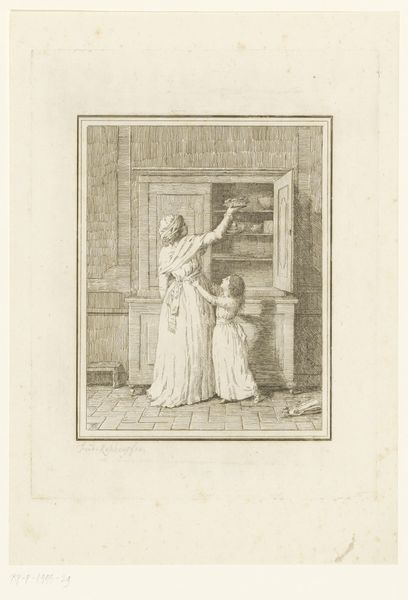
Mother and Daughter in Prayer 1806 - 1822
0:00
0:00
drawing, print, paper, watercolor
#
portrait
#
drawing
#
girl
#
mother
#
narrative-art
# print
#
paper
#
watercolor
#
romanticism
#
history-painting
#
academic-art
#
watercolor
Dimensions: sheet: 5 5/8 x 7 13/16 in. (14.3 x 19.8 cm)
Copyright: Public Domain
Curator: Right, let's talk about this beautiful piece. It’s called "Mother and Daughter in Prayer" by Julius Schnorr von Carolsfeld, likely created sometime between 1806 and 1822. It's a watercolor and print on paper. Editor: My initial thought is how peaceful and intimate the scene is. There's a gentle quality to the light, and a palpable sense of quiet devotion. It’s visually quite soft, wouldn’t you say? Curator: Yes, absolutely. The watercolor technique definitely lends itself to that softer aesthetic, particularly in portraying the relationship. I mean, look at how tenderly the mother guides her daughter in prayer. Editor: That maternal embrace is potent. But what I find compelling is its historical context. This work appears during a rise in Romanticism, when expressions of religious piety and family values served distinct ideological functions, no? Especially in relation to burgeoning nationalism and traditional gender roles. Curator: Ah, right, of course. And don't forget von Carolsfeld was part of a generation looking back to earlier art for inspiration, a revival of sorts. Hence the somewhat old-fashioned clothing of the figures. It speaks to an idealized past. Editor: Precisely! Those costumes reinforce that link, casting the nuclear family as a pillar of morality. Though I wonder about the choice to depict the Virgin Mary in the altarpiece? Curator: Well, it further emphasizes that connection to tradition, plus the overarching theme of motherhood itself. A mother and daughter reflected, so to speak. What do you think that iconography may have symbolized? Editor: Right. It highlights a certain model of idealized womanhood, perhaps reinforcing social expectations regarding women’s roles within the family and their devotion to faith, at a critical time in political reform. Is the quiet strength of domesticity in opposition with changing power structures? Curator: It could be. Yet, I still can't help but be moved by the pure emotion, that sense of faith being passed down, a legacy…maybe I'm just a sentimental soul. Editor: No shame in that! Art is powerful precisely because it operates on so many levels – personal, historical, political... it’s a multilayered message. Curator: Agreed. A final lingering gaze—I’m really seeing new aspects to this drawing all over again! Editor: Always.
Comments
No comments
Be the first to comment and join the conversation on the ultimate creative platform.
